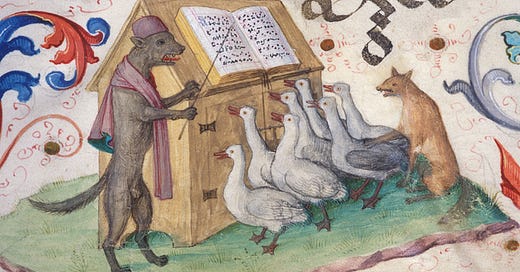Dear bookish friend,
Today, September 29th, is the feast of St. Michael and the Archangels. This was the great harvest feast of the fall in the medieval era—a holy day of obligation, so not too far below the great feasts of Christmas and Easter. It was also a quarterly day, like the feast of the Annunciation in March, Midsummer, and Christmas, when rents were collected, legal things like local elections happened, and people partied. It was the tradition to eat geese on Michaelmas for feasts (we are not quite sure if this was happening in the Middle Ages, but it has been around certainly since Queen Elizabeth and probably earlier). Later, eating the goose on Michaelmas was associated with good luck, particularly financial good luck. Jane Austen, the queen herself, mentions it in 1813, writing to her sister Cassandra that she ate goose on Michaelmas and hopes it will “secure a good sale of my 2nd edition.”1 She is referring to none other than Pride and Prejudice…! I suppose that goose worked its magic, in the long run!

But back to the Middle Ages. Michael was very popular, as you can tell by remaining church names. In the Church of England, Michael has over 800 parish churches named after him! The only ones with more (according to my dubious source, Wikipedia) are St. Mary, All Saints, and St. Peter.
Keep reading with a 7-day free trial
Subscribe to Medievalish with Grace Hamman to keep reading this post and get 7 days of free access to the full post archives.



